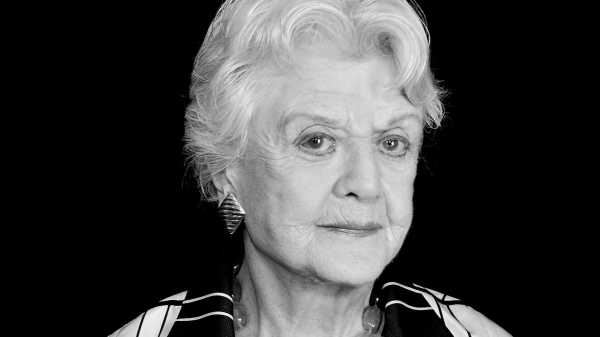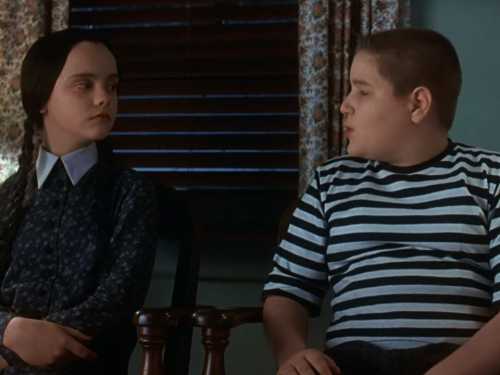
Unless you are hovering around a hundred, you probably can’t remember a time when Angela Lansbury wasn’t famous. Like the reign of Queen Elizabeth II, her career spanned so many decades and cultural upheavals that she seemed as constant and as comforting as the blue sky above. Both Lansbury and the Queen were hardy British matrons who elicited the affection given to a grandmother, and both were as likely to be found in glitzy regalia as in a simple wool cardigan. And both lived into their nineties, dying just over a month apart, leaving behind a public that believed, on some level, that they would be around forever. But, let’s face it, only one of them could solve a murder in an hour or less.
Because Lansbury worked so long and so well, there isn’t a generation that missed out on her. Her breakout role was in 1944, as the saucy Cockney maid in M-G-M’s “Gaslight”—she was seventeen when she landed the part—for which she was nominated for an Academy Award for Best Supporting Actress, one of three nominations she received before she was forty. Although she appealed to practically everyone, she had a special grasp on the old and the young. Her twelve-year tenure as Jessica Fletcher, on “Murder, She Wrote,” made a demographic that is usually invisible in mass culture—older women—visible, in the form of an eagle-eyed, successful mystery writer who enjoyed such simple pleasures as bicycling and solving gruesome crimes. And she wedged herself—or at least her unmistakable voice—into children’s imaginations decade after decade, whether as a witch-in-training in “Bedknobs and Broomsticks” (1971), a corrupt sorceress in “The Last Unicorn” (1982), or a kindly teapot in “Beauty and the Beast” (1991). When she appeared in the last scene of “Mary Poppins Returns” (2018), as a sweet balloon seller, I burst into tears. I’d known that voice forever.
And yet it would be wrong to reduce Lansbury to the show-biz equivalent of a cozy cup of tea. Her career was so long and varied that it’s harder to encapsulate than it is to skim the highlights and marvel at how different they are. In the Hollywood studio system of the nineteen-fifties and early sixties, she was often cast as shrews or noxious mothers. In the later sixties and seventies, she was a brassy Broadway belter in “Mame” and “Gypsy.” (She won six Tony Awards, including one for lifetime achievement.) She was the unlikely star of a 1988 fitness video. And her two most outstanding performances, to my mind, showed that she was as agile with evil and carnality as with kindness and warmth. In the Cold War thriller “The Manchurian Candidate” (1962), she played a political puppet master who commands her own brainwashed son to “shoot the Presidential nominee through the head.” Her performance, which earned the last of her three Oscar nominations, still chills the bones—this ain’t no Mrs. Potts.
In 1979, she created the role of Mrs. Lovett, the rolling-pin-wielding serial killer’s accomplice, in Stephen Sondheim and Hugh Wheeler’s musical “Sweeney Todd: The Demon Barber of Fleet Street.” With her sickly Creamsicle-colored buns and rag-doll makeup, she was funny, terrifying, lustful, and vulgar—concocting new ways for Sweeney to satisfy his bloodlust while sensuously pawing her stained apron. Even amid all the throat-slitting and flesh-eating, she was impossible not to love. Stylistically, it was a feat: Lansbury reached back to nineteenth-century genres such as the British music hall and Grand Guignol and adapted them to Sondheim’s punishingly complex score, nailing every double entendre and triple-axel rhyme. But she rooted the character in simple, unrequited love. “Here was this ridiculous, rather naïve little woman who was mad about Sweeney Todd,” she told John Lahr, in 2009, “and who would have done anything in the world for him but was totally incapable of seeing right or wrong and went along with anything he suggested just to stay in with him.” She said it was her happiest experience on a stage.
Like many character actors, Lansbury didn’t achieve her full potential until middle age, and her first forty years—despite the trio of Oscar nominations—were something of a run-up to what came after. She was born in London in 1925, to the Irish actress Moyna MacGill and the English lumber merchant Edgar Lansbury. (She ascribed her “reserved side” to her English half and her “comedy and whimsy” to her Irish half—a key distinction from Queen Elizabeth.) Her father passed away shortly before her tenth birthday. She recalled, “I was an old lady at ten. When my father died, I became the partner with my mother in bringing up my brothers. I had to grow up fast.” After her grandfather—the Honorable George Lansbury, a mutton-chopped Labour Party eminence—died, as well, the loss, combined with the Blitz, pushed her mother to take a job supervising six hundred young British evacuees aboard the Duchess of Atholl. This allowed her and the teen-age Lansbury to flee to the United States, where they retained little of the stature that they’d enjoyed in London. In Hollywood, where they settled, in 1942, mother and daughter worked at Bullock’s department store, where Lansbury made twenty-eight dollars a week as a wrapper. That’s when she met the director George Cukor, who cast her in “Gaslight,” and she was signed to a seven-year contract with M-G-M.
From the beginning, Lansbury seemed older than her years. “I had a sort of comedienne thing about me,” she said. “I was never the ingénue type, luckily, since there were too many girls who looked like ingénues. But I would have been a character actress in any case. It was my bent from the beginning.” Not a sultry movie siren, she mostly fell through the cracks of the studio system. Cecil B. DeMille cast her in “Samson and Delilah” only after inspecting her bare feet, and M-G-M’s Louis B. Mayer typed her as a dragon lady, when she yearned for comedic parts. “I kept wanting to play the Jean Arthur roles, and Mr. Mayer kept casting me as a series of venal bitches,” she said. She started playing mothers—usually bad ones—when she was twenty, and fell into a rut in the fifties. She played Elvis Presley’s mother in “Blue Hawaii” (1961), when he was twenty-six and she was thirty-six. In “The Manchurian Candidate,” the next year, she was three years older than Laurence Harvey, the actor playing her son. “I was always in makeup to play beastly women in their forties or fifties,” she complained. “My movies usually were stinkers.”
She could have easily faded into history, a side player from a bygone age of cinema, were it not for her self-reinvention as a Broadway powerhouse. “All those years I had this vision that someday I’d blossom forth, that I’d show everybody what I was really capable of,” she recalled. “I could see myself singing, dancing, carrying on, being the life of the party, hogging the limelight—the works. Nobody knew—not even my family. But I knew.” The opportunity finally came in 1965, just weeks after her fortieth birthday, when she won the glamorous, life-loving title role in the Jerry Herman musical “Mame.” When it opened on Broadway, the following spring, she became the toast of the town—and had a shot at center stage at last. “Hell, I want all the glamour there is,” she said to Life. “I’ve been starving for it for years!” Though she lost the chance to star in the movie version of “Mame” to Lucille Ball, Broadway gave Lansbury a new chapter as a megawatt musical-comedy diva.
Her next reinvention came in 1984, when she began her long run on “Murder, She Wrote.” “What appealed to me about Jessica Fletcher,” she said, “is that I could do what I do best and have little chance to play—a sincere, down-to-earth woman.” At the time, there were few female-led dramas on television, apart from “Cagney & Lacey,” and a brainy fifty-nine-year-old woman was even rarer. A consistent hit for CBS, the show became a Sunday-night security blanket—until it was inexplicably moved to Thursday nights, competing with “Friends,” and then cancelled—and turned Jessica Fletcher into a pop-culture folk hero, on par with Columbo or Miss Marple. “It doesn’t represent in any way a stretch, as we call it, to play Jessica,” Lansbury said, on the show’s tenth anniversary. “But to play Jessica, a role that has such enormous, universal appeal—that was an accomplishment I never expected in my entire life.”
While “Murder, She Wrote” made Lansbury a living-room fixture, “Beauty and the Beast” introduced her to a new generation of six-year-olds—and to every generation of six-year-olds that came after. She chose to voice Mrs. Potts mostly as a gift to her three grandchildren, but, in her low-key way, she pioneered the kind of celebrity voice-acting in Disney films that exploded the next year, with Robin Williams’s performance in “Aladdin.” Because she imprinted on so much of her audience when she was in her sixties, her grandmotherly image superseded much of what came before. But her range shouldn’t be forgotten: when she chose to be, she was a consummate villainess, a comedic sharpshooter, and a sequined show horse who could bring down the house. During a 1973 Sondheim tribute, her dangling earrings slipped off her ears, and she ad-libbed, “Diamonds—what are they, compared to a good performance?” ♦
Sourse: newyorker.com






